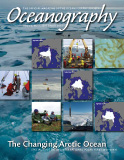First Paragraph
The Arctic is “hot” and not only because it’s physically warming, but also because the world is looking north at climate change, resource exploration, undersea territorial claims, tourism, conservation and ecological impacts, and the promise of marine shipping opportunities. The United States, which became an Arctic nation almost 150 years ago by purchasing Alaska from Russia, has economic (primarily natural resources), security, and environmental interests in the North. These interests are encapsulated in two US national policies, one for the Arctic region in general and another specifically oriented toward Arctic research. In addition, “changing conditions in the Arctic Ocean” emerged as one of nine priorities developed by the National Ocean Council as it moves forward with implementing the President’s new ocean policy (see http://www.whitehouse.gov/oceans/policy). Research serves our nation by providing information for policy decisions, and, in turn, policy choices influence the type of research supported by the nation. This article provides an overview of Arctic policy positions and outcomes, with an emphasis on current research policy.

